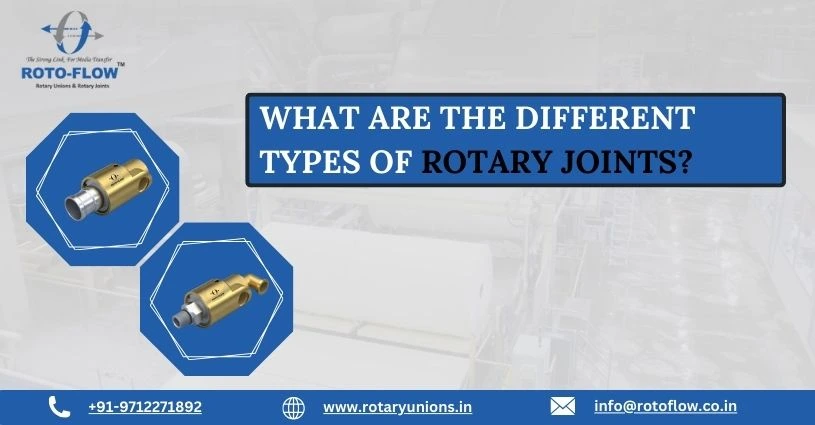Rotary joint, also known as rotary unions, are essential components in industrial applications. They allow the transfer of fluids like water, steam, air, and oil between stationary and rotating equipment. Each type of rotary joint is designed for specific applications and operational requirements. In this article, we’ll explore the various types of rotary joints and their unique features.
Types of Rotary Joints
1. Water Rotary Joint
Water rotary joints are widely used in industries where cooling or heating is necessary. These joints facilitate the transfer of water between stationary and rotating parts in equipment such as paper mills, steel plants, and cooling systems. Their ability to handle high flow rates and temperature fluctuations makes them indispensable for water-based applications.
2. Steam Rotary Joint
A steam rotary joint is specifically designed to handle high temperatures and pressures associated with steam applications. Industries like power generation, textile manufacturing, and food processing use steam rotary joints for processes like heating, drying, and sterilization. These joints ensure efficient steam transfer while preventing leaks and maintaining system safety.
3. Air Rotary Joint
Air rotary joints are used in systems where compressed air is essential. Common applications include pneumatic tools, industrial machinery, and robotics. These joints are lightweight and capable of handling high-speed rotations, ensuring reliable air transfer for smooth operations.
4. Oil Rotary Joint
Oil rotary joints are used to transfer lubricants or thermal oils in machinery. They are essential in industries like automotive, manufacturing, and plastics, where consistent lubrication or temperature control is required. These joints are designed to prevent contamination and ensure seamless oil flow.
5. Hydraulic Oil Rotary Joint
Hydraulic oil rotary joints are robust and capable of handling high pressures. They are crucial in hydraulic systems for equipment like cranes, excavators, and heavy machinery. These joints allow for efficient hydraulic oil transfer while accommodating the movement of rotating parts.
6. High-Pressure Rotary Joint
High-pressure rotary joints are engineered to handle extreme pressure levels, often exceeding 10,000 PSI. These joints are used in demanding applications like oil drilling, chemical processing, and hydraulic systems, where reliability and safety under high pressure are paramount.
7. High-Speed Rotary Joint
For applications involving rapid rotations, such as in printing presses or machine tools, high-speed rotary joints are ideal. These joints are designed to minimize friction and wear, ensuring smooth operation at high speeds while maintaining fluid integrity.
8. Multi-Passage Rotary Joint
Multi-passage rotary joints are advanced components that enable the transfer of multiple fluids or gases simultaneously through separate channels. These joints are widely used in complex systems like robotics, molding machines, and automated manufacturing equipment. Their design ensures efficient and leak-proof fluid management.
How to Choose the Right Rotary Joint for Your Needs
Selecting the right rotary joint depends on the application requirements, including:
- Temperature and Pressure: Choose a joint that can withstand the operating conditions of your system.
- Fluid Type: Ensure compatibility with the fluid or gas being transferred.
- Speed: Consider high-speed joints for fast-rotating machinery.
- Number of Passages: Opt for multi-passage joints for complex systems.
Conclusion
Rotary joints are vital components that enhance the efficiency and functionality of industrial systems. Whether you need a steam rotary joint for high-temperature applications or a high-pressure joint for demanding tasks, understanding the different types can help you make an informed choice. Selecting the right rotary joint not only optimizes system performance but also ensures long-term reliability and safety.

